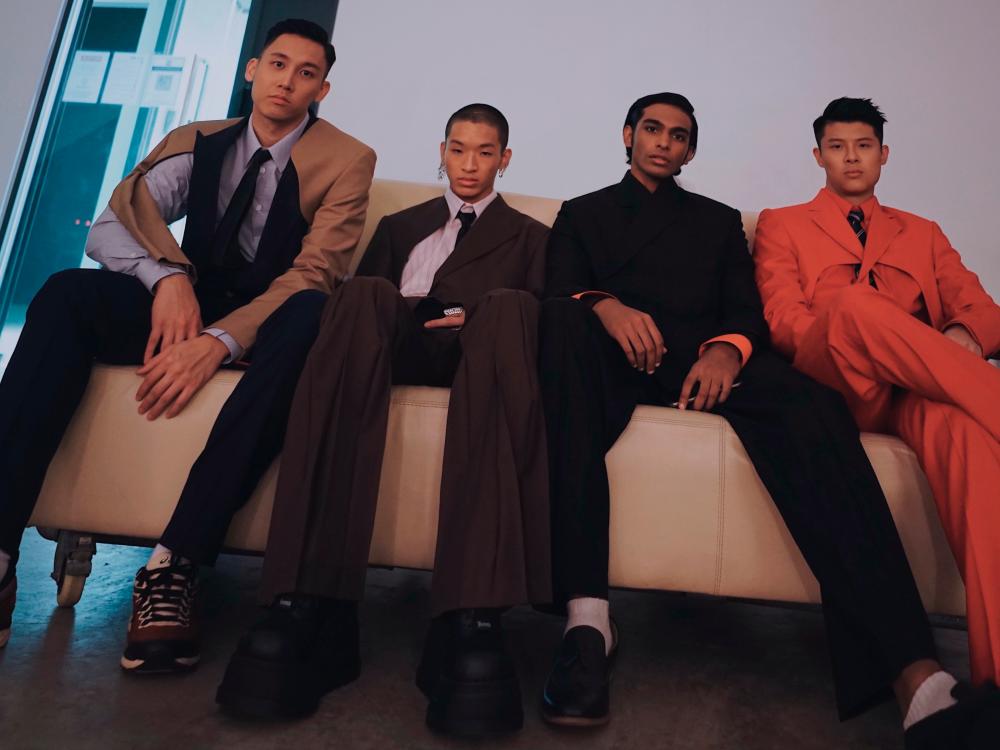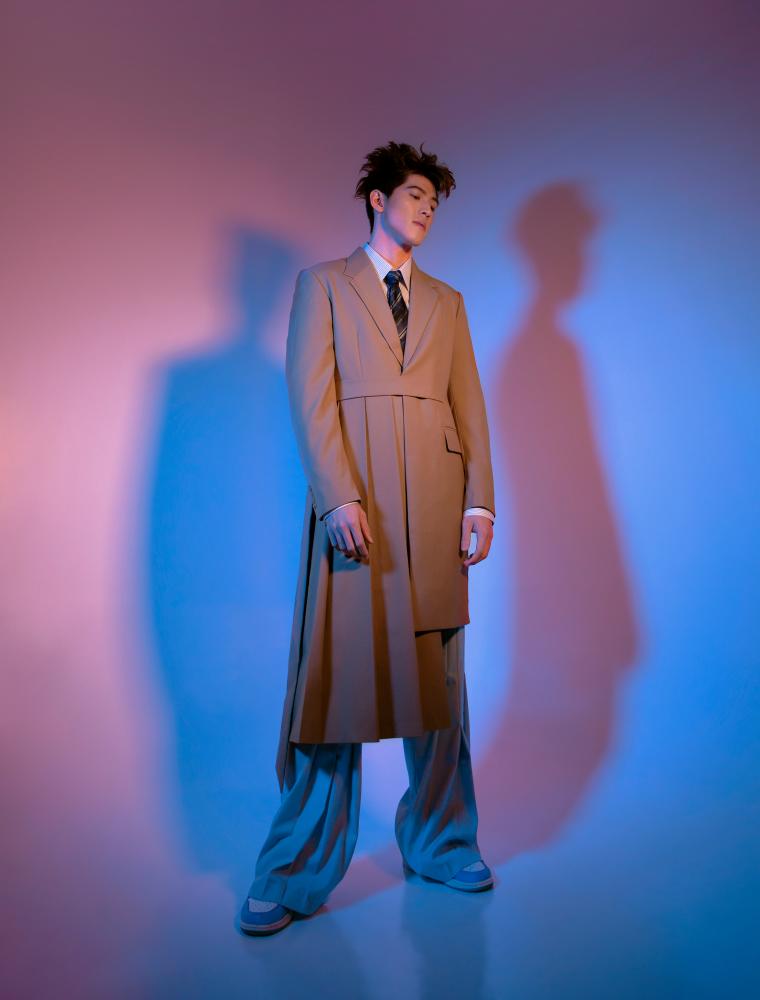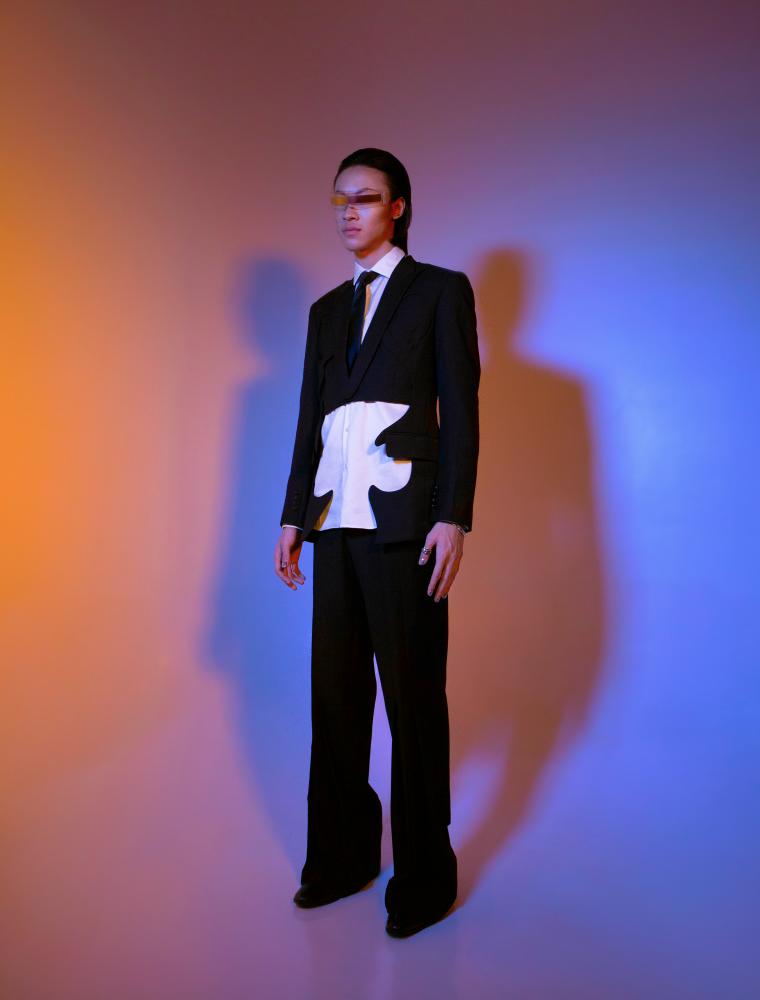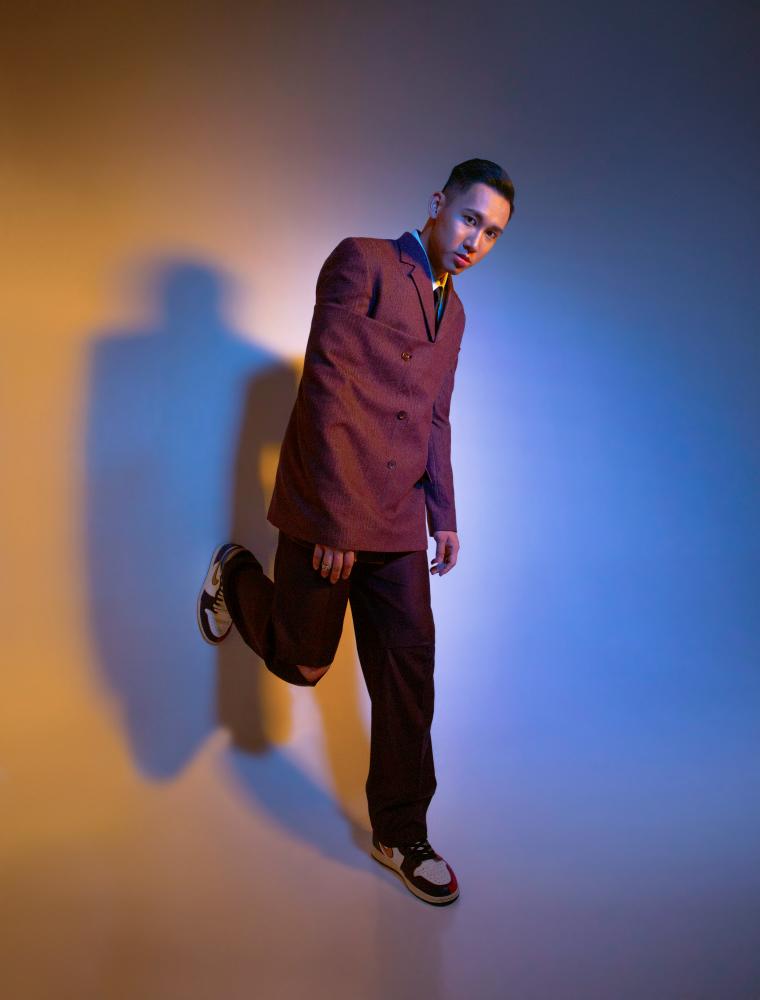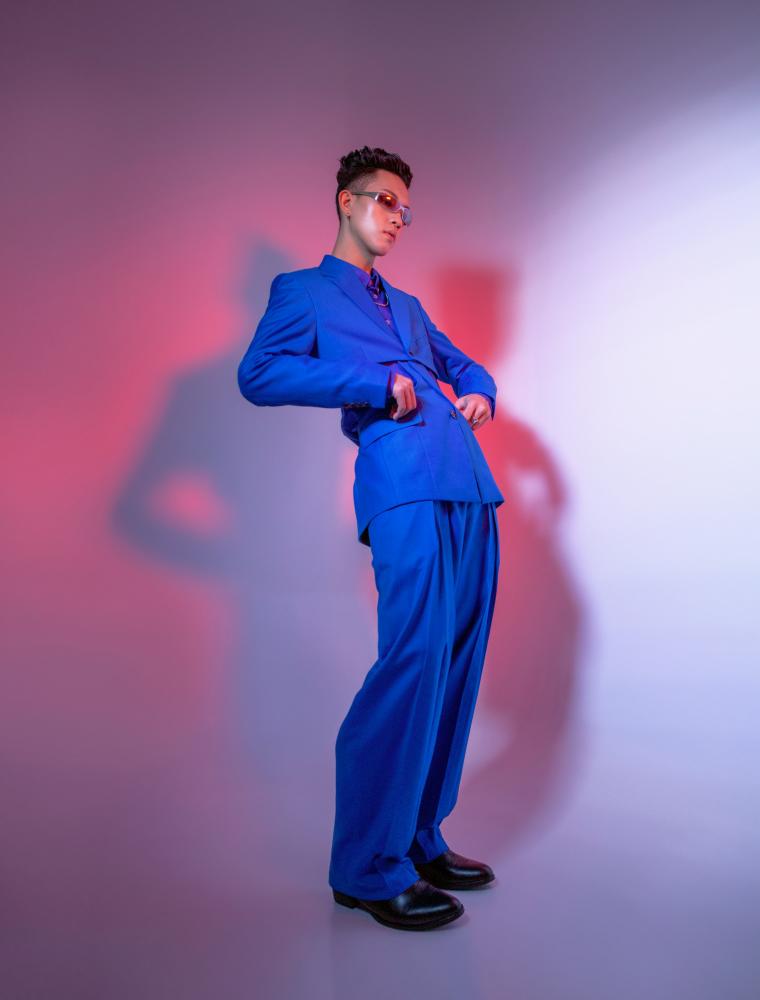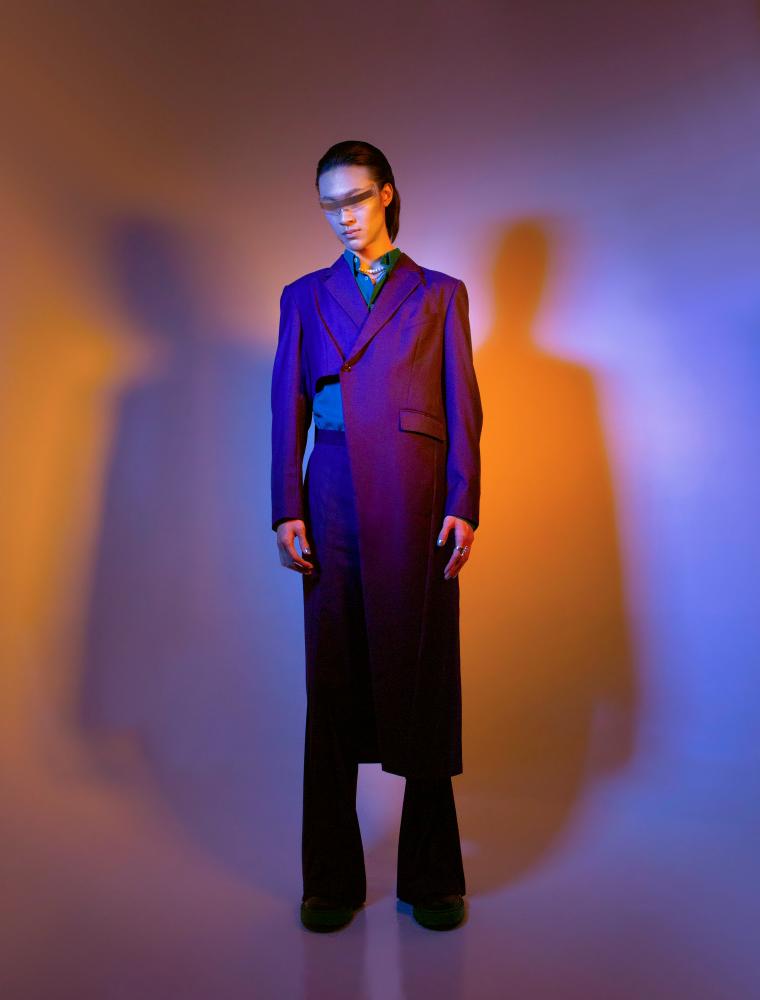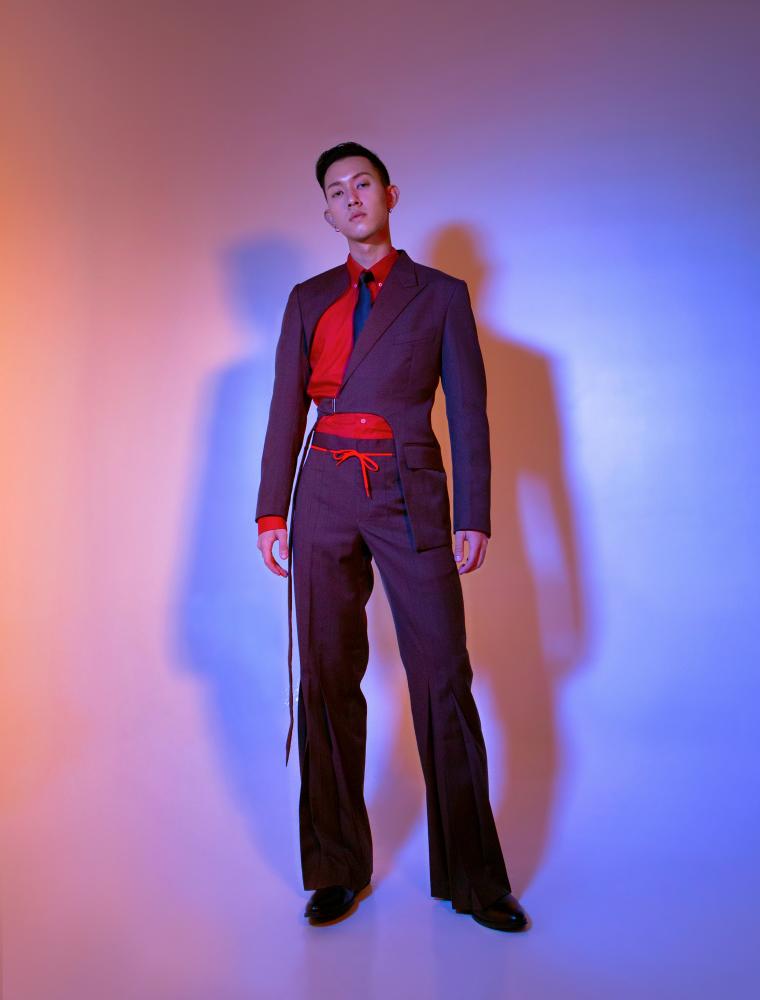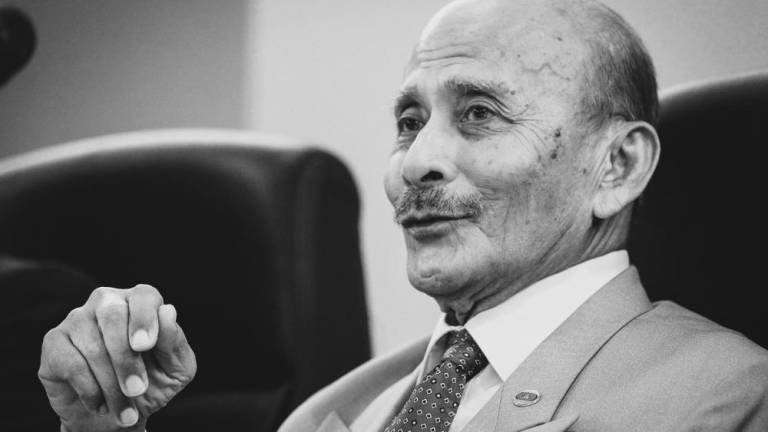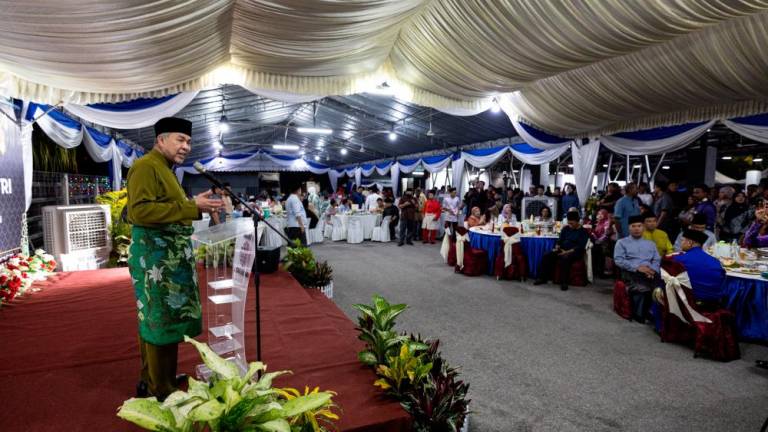THE perception of men’s fashion has shifted multiple times in the past decade, mainly through revivals and comebacks, notably the return of streetwear by way of Supreme and Off-White.
Emerging fashion designer Dickson Lim intends to continue riding the disruptive wave, despite continuous headlines like: “Streetwear is dead!” or “Streetwear has lost its meaning!” over the year.
“Prior to this, I wanted to start a streetwear brand but it didn’t seem right,” Lim confides.
“It’s clear that the scene is oversaturated with brands that prioritise sales over creativity, whilst pumping out generic printed t-shirts, track pants and the occasional bomber jacket. There’s just not much emphasis on the archetypal menswear in Malaysia.”
For his debut Spring/Summer 2021 collection titled Disoriented Identity, Lim draws inspiration from his own sense of identity, as well as his own attempts to grasp the humanistic relationship between creativity and philosophy.
His unwavering passion and grand ambition to become a fashion designer was met with resistance and perceived as delusional by family and friends.
This conflict caused Lim to question: “Am I living for myself or to please others’ expectations?”
“Although I did not receive formal education to become a fashion designer, I was under the tutelage of my father, a master tailor whom I greatly admire, and it affected the way I view fashion school.
“With the abundance of resources online, learning and sharing your work has never been easier.
“You don’t become a fashion designer when you graduate with a degree, you become a fashion designer when you do what you love out of passion, and not for a grade.
“The unique aspect of all creatives is our vision, and our taste is what sets us apart from everyone else.”
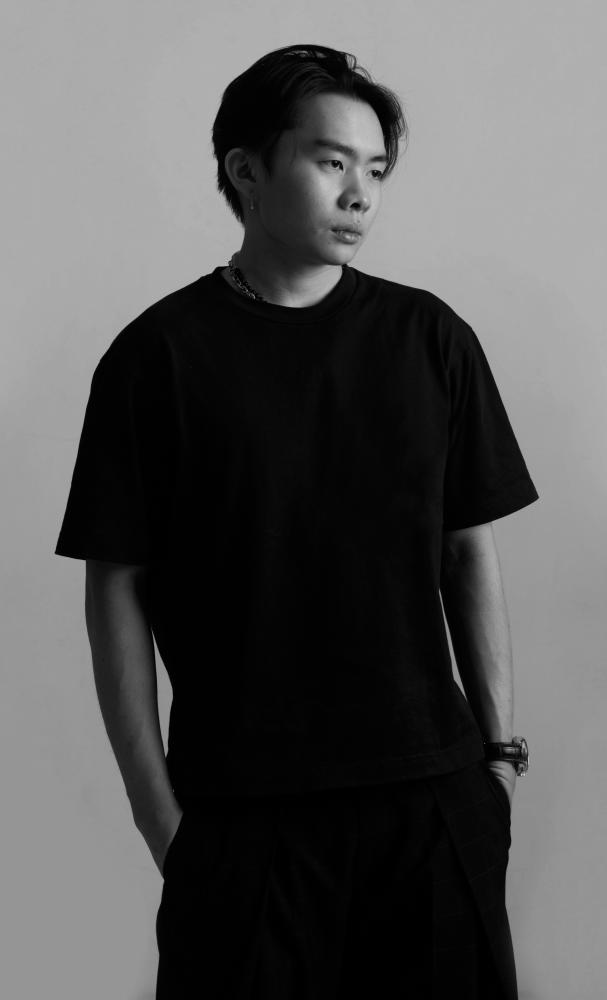
Lim struggled between his passion and desire to pursue his dream, or his obligation to join the family business as a tailor. Ultimately, it was up to him to call the shots.
“As this compounded, I seemed to have lost my identity, and felt oddly detached from reality. If anything, my actions coincided with my values in life,” Lim adds.
“My curiosity with the notion of identity eventually led me to Aristotle’s theory on relativism, and Alfred Alder’s theory on inferiority complex, and I was able to finally build the courage to move on and balance out the conflicting forces of identity and role confusion.”
Lim looked towards academic philosophy to make connections with day-to-day situations and ideas that directly influenced his decisions and creative efforts.
That inspired his debut collection, which was arguably influenced by the forces of self-actualisation, referencing Abraham Maslow’s Hierarchy of Needs – to realise creative potential, and to seek personal growth and experiences.
A desire “to become everything one is capable of becoming,” as Maslow argued.
As Lim assumed the role of a fashion designer, he managed to turn his quandary into defining principles that determine the creative and artistic direction of his namesake brand, while remaining true to his craft.
He shares: “This has inspired me to express my thoughts and feelings into my designs through asymmetrical cuts and layers in the collection, which symbolise the false projection of my reflection opposing my real identity.
“And when I say disoriented identity, I’m referring to the global and core identity that [shapes] our personality today. I suppose my interpretation of global identity includes moral, gender, and youth identity as well.”
Semi-abstract in form and tremendously deconstructed beyond the traditional sensibility of tailoring, Lim reimagined conventional rules into conditional perfection.
As a result, he emphasised the sculptural proportions of the body with streamlined tailoring silhouettes subverted by scrupulous cutaways like jigsaw puzzles, which has since become one of the distinguishing hallmarks of his idea of contemporary menswear.
At the same time, he explored the genderless contrast that shifts between men’s and womenswear silhouettes to capture the experimental forms of adrogyny.
Lim explains: “The line between menswear and womenswear has never been finer. With freedom of expression and the acceptance of diversity in contemporary society, maintaining masculinity was never in my conscious purview.
“Despite working on menswear, I’m not vigilant about maintaining ‘manliness’ in my designs, as I view all genders as equal, and [believe that] no gender is above the other.
“At the same time, I also envision women wearing [my designs]. For women to wear menswear does not make them masculine, the same way that wearing womenswear does not feminise men.”



